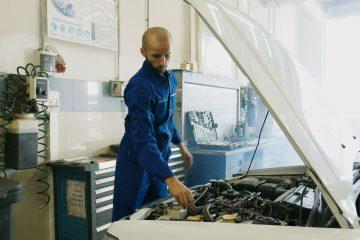In the past, I’ve discussed exhaust system layout and the functions of the individual parts. Sometimes, these parts need to be replaced. This is doubly true if you live in the rust belt and drive on salty winter roads, or otherwise subject your car’s exhaust system to abnormal wear and tear. Unfortunately, these conditions, combined with the heat and cold cycles that exhaust systems go through every time they’re used, often make the job more difficult than it would be otherwise. But, if you keep a few simple tricks in mind, replacing exhaust parts can be much less difficult.
First off, you’ll need to determine where the damage is. If you have a rust hole or damage in one part of your exhaust system, other parts might still be serviceable. If you can’t see the damage from a distance, get the car up on a lift, ramps, or jack stands and inspect it more closely. Once you’ve found the wear or damage, your next task is to determine how the exhaust system is assembled. In most cases, you’ll find that the exhaust is bolted together and secured to the car with rubber hangers. Sometimes, the exhaust is welded together, either by the factory or by the last exhaust shop to have worked on the car.
If the exhaust is bolted together, you can save yourself some trouble later on by soaking the exhaust bolts with penetrating oil a couple of days in advance. You’ll find that exhaust nuts and bolts tend to rust together pretty badly, and this will help you separate them when you have your new parts ready for installation.
If you have a welded exhaust, you’ll first need to determine which individual pieces are available for your exhaust system. You’ll need to decide if you’re replacing sections or the whole system. Once you know that, and have the new parts in hand, you’re going to need to cut out the old parts. There are a variety of tools you can use, from hacksaws, to rotary cutting tools, to purpose-built exhaust pipe cutters. Just be sure that you work safely, as you’ll be in a confined space underneath the car.
Once you have the old parts out of the way, it’s time to install the new parts. If you’re working near the engine, you’ll sometimes find that your exhaust manifold studs are too beat-up to be reused. If that’s the case, take the time to replace them, so as to avoid a leaking exhaust manifold gasket upon reinstallation. Also, if the penetrating oil didn’t do enough to help loosen the fasteners, you can speed things along with careful application of heat via a torch, or by using a nut splitter to cut the old fasteners out.
As with any repair job, a little planning ahead can mean time and effort saved when working on an older exhaust system.



